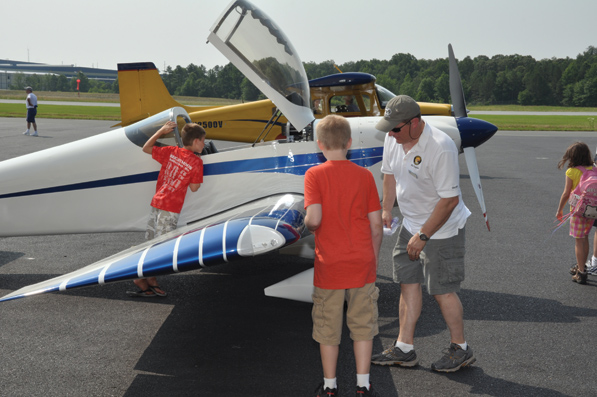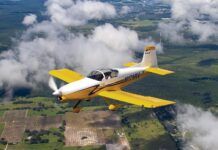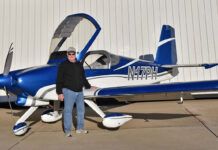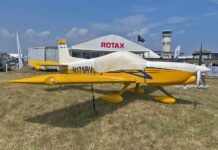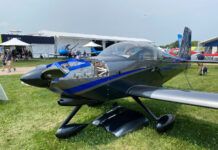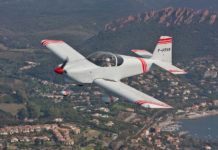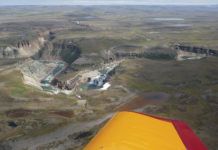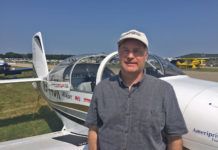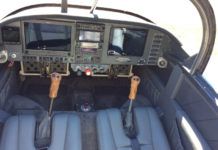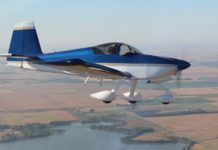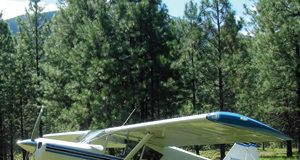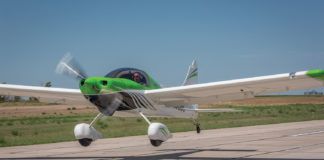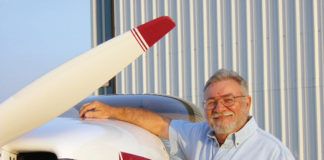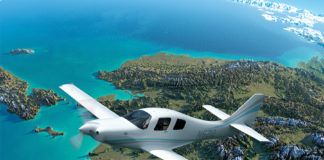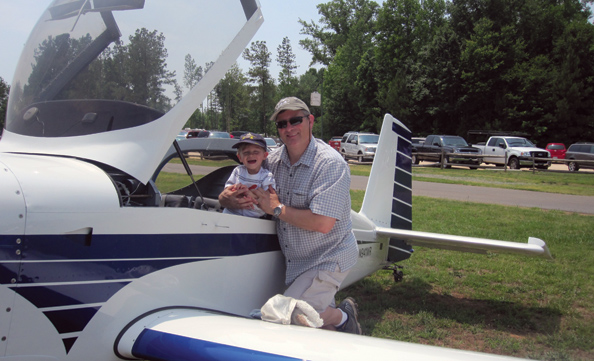
It is not often that someone gets to own and fly the exact same airplane with two significantly different engines. However, that is just the situation I have found myself in.
When I first built N941WR, it was fitted with a Lycoming O-290-D2 that last saw service on the front of a Piper PA-18 in the late 1950s. That particular engine was purchased sight unseen from an advertisement I found on the web. It sounded too good to be true: 750 TT (total time), 0 SMOH (since major overhaul), $3500. The catch? Well, that overhaul was performed in 1959.
Why take the risk? I wanted to build a light, simple, day/night VFR ship to replace my pre-war T-Craft. With that bit of history, the O-290 sounded like a new engine. Besides, if it was in bad shape when I got it home, I could always sell off the parts and buy an O-320, the largest recommended engine for the Van’s RV-9. As it turned out, the engine was in outstanding shape and provided excellent service, right up until it tried to recycle a landscaping trailer.
My goal to build a light airplane worked out. N941WR had an initial empty weight of 990 pounds and an empty CG of 78.82. The RV-9’s CG range stretched from 77.95 to 84.84 inches, which meant I could fill the tanks, put two Bubbas in the front seats and 75 pounds of baggage in the back, and still be 39 pounds below the 1750-pound maximum gross weight as stipulated by Van’s. While that sounds great, it’s not all roses: After the 11th gallon of dead dinosaurs departs the leading-edge wing tanks, the CG moves aft of the limit. There was no weight-and-balance restriction on light pilots with full fuel, so that was good. But the issue with heavier pilots running out the back of the CG envelope was one downside of a light engine installation.
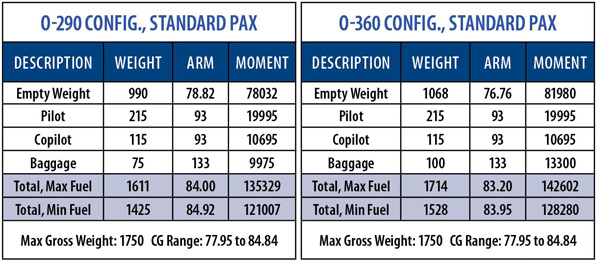
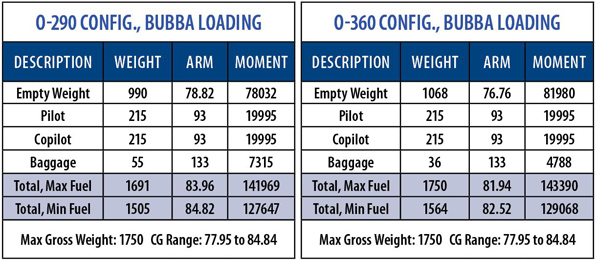
The infamous Bubba loading. The lighter O-290 engine allows more total baggage to be carried with two large pilots aboard compared with the same airplane using the O-360. But where the larger engine limits the cargo because it bumps the max gross weight, the limitation with the O-290 is, again, reaching the aft-CG limit with minimum fuel.
More Weight = More Weight
Like me, the plane gained more weight than expected through the rebuild. My calculated weight gain of between 35 and 40 pounds was a little off, even taking into account the new engine, full leather interior, dual-axis autopilot, miscellaneous doodads here and there. It must be the batteries in my calculator. In the end, 78 additional pounds was a lot more than I wanted, but I could live with an empty weight of 1068, prior to painting. Certainly there are heavier RV-9s out there.
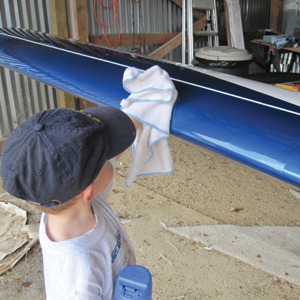
The 2-inch-shorter engine mount required for the larger engine still allowed the empty CG to move forward 2.06 inches to 76.76. This turned out to be ideal, as I no longer have to worry about the CG moving aft of the limit as fuel burns off; however, I do have to worry about going over the 1750-pound max gross weight. With two Bubbas up front and either full fuel or no fuel, N941WR will remain in CG. The challenge is that Bubba and Bubba had better pack light, as the plane is now limited to 36 pounds of baggage before going over max-gross with them on board.
My wife is my typical traveling partner and far from the Bubba factor, so my true useful load actually increases with no longer having to worry about the CG sliding aft as fuel burns off. Now I can haul myself, my wife and 100 pounds of her scrapbooking stuff.
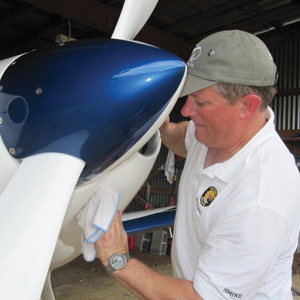
Phase I Redux
When N941WR first flew in 2007, it was assigned a 40-hour Phase I test period. With all the changes made to the aircraft, I was surprised to discover that my operating limitations required only a 5-hour Phase I test period when making a major repair or alteration. Performing the required testing in that short period of time is a challenge, but there is nothing in the regulations stating that you can’t elect to extend the test period, if needed.
Because the plane is essentially the same, with the exception of the engine, cowl, interior and autopilot, the question became: Does it fly any differently?
Well…yes and no. Because the CG moved forward a little over 2 inches, it is now more difficult to perform three-point landings despite my best efforts. With the small engine, it was difficult to wheel land. While this may not seem like a big deal, on shorter runways I always prefer to perform full-stall, three-point landings. This is because the plane is moving at its slowest forward speed and, due to the aerodynamics of the tail-down position, the plane slows rapidly without touching the brakes. When wheel landing the RV-9, it is surprising how far it will coast with the tail up. Because of the efficient Roncz main-wing airfoil, putting the tail down after performing a wheel landing is best done when well below the stall speed lest a slight gust of wind cause you to become airborne again.
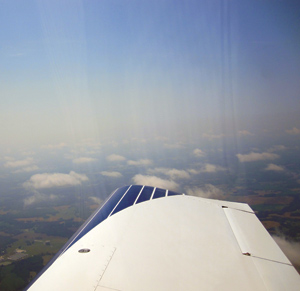
Once aloft, the plane flies differently as well. With the small engine, the airplane always felt very light in pitch, which was a result of the aft CG. It was stable but light, almost on par with the short-wing RVs. With the heavier nose, the airplane feels more stable in pitch. The control harmony, while never bad with the O-290 engine, is more in keeping with the roll effort, and more in line with the mission this plane was designed for. The aircraft is a delight to fly with either engine and remains true to its Van’s heritage.
Power Versus Weight
The old adage, “There is no replacement for displacement” holds true for airplanes as well as cars, boats, motorcycles, trains, tractors and weedeaters. With the larger engine—producing 180 horsepower against the previous 135 hp—the power-to-weight ratio changed from 13 pounds per horsepower to a fairly sporty 9.5 pounds per horse. Meaning there was a 37% improvement.
While I never thought the 135-hp RV-9 was underpowered, I could not cruise it at full gallop. The reason was that the propeller I had installed on the small engine turned out to be an excellent climb prop. By excellent, I’m talking about 1800-fpm solo climb rates at Vx and only 1500 fpm at gross.
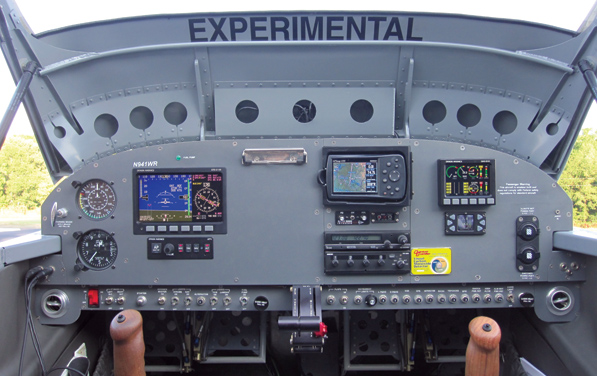
Typical cruise speeds were 140 knots TAS (165 mph) at the old engine’s 2600-rpm continuous power redline, burning just under 7 gph. That means the small engine could keep the RV-9 aloft for 4.6 hours and still have a more than 30-minute reserve of 4 gallons at high cruise.
The climb-oriented, fixed-pitch prop and O-290 would pull the RV-9 up to 178 mph at full throttle and 2870 rpm at 8000 feet density altitude. (The O-290-D2 has a 2600 rpm max-continuous power redline and a 2800 rpm redline limited to 5 minutes.) Not too bad, unless you fly with a pack of RVs; then those numbers seem anemic.
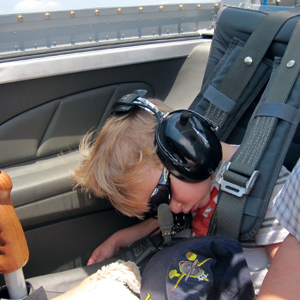
The amount of right rudder needed with the O-360 isn’t noticeably different from what was required with the O-290. The first time I really noticed the power increase was taking off from a short grass strip with trees just off the departure end of the runway. As I looked down at the vertical-speed indicator (VSI), it was passing 2200 fpm with me and three-quarters fuel aboard. Now we were getting somewhere.
Playing with Props
I’m in the middle of a test program with propeller designer and manufacturer Craig Catto, who has designed a new, more efficient prop. Because 180-hp RV-9s are rare, he asked if I could try out some new designs for him. The first one I tried was a great climb prop but limited me on cruise, similar to what I was experiencing with the O-290. The prop I’m flying with now is an ber cruiser 74-inch-diameter monster. It puts out enough thrust to drag the plane across the blacktop with the brakes locked, while still providing acceptable climb rates and outstanding cruise speeds.
What’s acceptable? At near gross weight with outside-air temps in the mid-90s, 1800 fpm is a climb rate I call quite acceptable. Cruise speeds are a “disappointment” at only 173 knots TAS (199 mph). There will be no bragging that I have a 200-mph airplane.
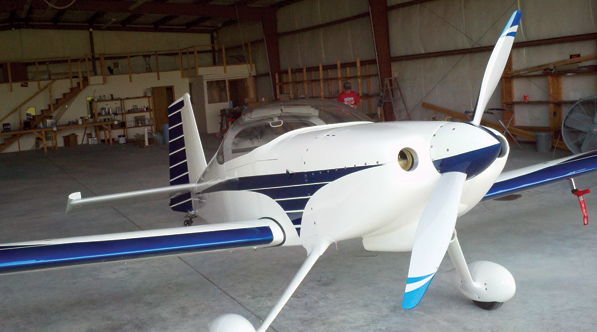
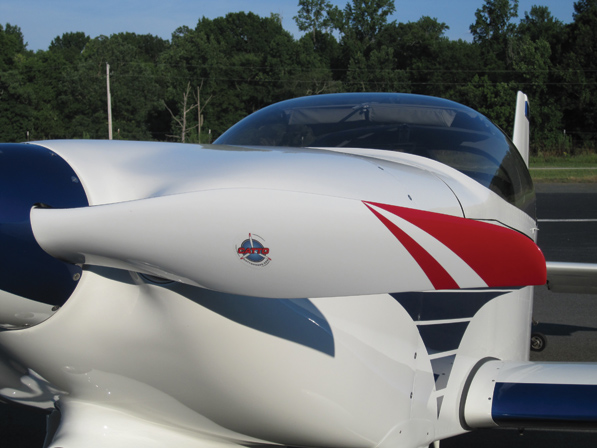
The Blue Stuff
While the little O-290 engine could pull the plane along at 140 knots/165 mph, it would do so while sipping just 7 gph, giving N941WR a 4.6 hour or 760-mile range while turning the prop at 2600 rpm. Producing the top speeds listed above with the larger engine drains the fuel tanks at a rate of 12.5 gph while spinning the prop at 2650 rpm. At this rate, the 36-gallon fuel capacity of the RV-9 will be drained to fumes in just less than 3 hours. About 2.4 hours or 470 miles is all it can do at those power settings before cutting into the 30-minute VFR reserves.

In the 28 hours since the new engine was installed, 152 knots/175 mph seems to be the sweet spot. Fuel burn is down to 9 gph and range with VFR reserves jumps to 3.5 hours and 520 nautical miles/600 statute miles.
In terms of mixture settings, the new engine is being babied due to the low number of hours on it. Once additional operational experience is gained, the fuel burn is expected to come down and the range increase. I have experimented with running lean-of-peak exhaust-gas temperatures (EGTs), and even though the engine is carbureted, the dual electronic ignition allows for smooth LOP operation. In the end, there is always the option of pulling the power back to O-290 levels and enjoying the extended range while having additional climb power available when needed.
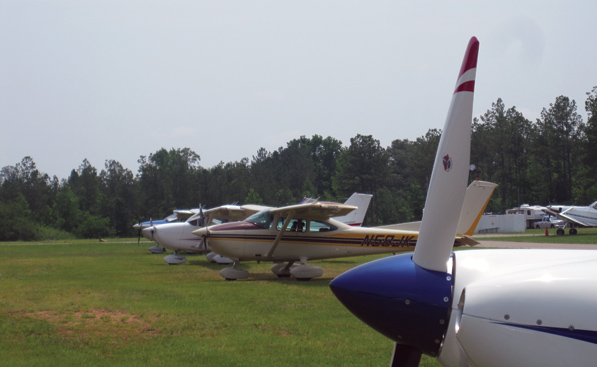
Having Fun
With the plane back in the air and the Phase I test period complete, we are once again enjoying the freedom of airplane ownership. On a recent Saturday, the newly rebuilt plane took part in the EAA’s National Young Eagles Day event where it spent 2.7 hours giving rides to some of the more than 180 children who attended. The following day my son asked to go for an airplane ride, so we climbed aboard N941WR for a short flight to our favorite lunch destination.
After all the flying, it was time to teach my son the finer points of cleaning the bugs off the airplane before putting it to bed. (I wonder how long it will be until I can get him to pay for fuel?)
The question you’re probably asking doesn’t yet have an iron-clad answer: Was the 180-hp upgrade worth the effort? As we discussed in the previous installments, the difference in weight and cost between the O-320, O-340 and O-360 engines was minimal. At this point, I’m happy with the takeoff and climb performance (and relieved that the airplane still handles marvelously), and I’m looking ahead to finding ways to reduce cruise fuel consumption to accommodate the 9’s smallish tanks. In a sense, though, that’s all in the noise. Right now, I’m just thrilled to have an airplane to fly again.
